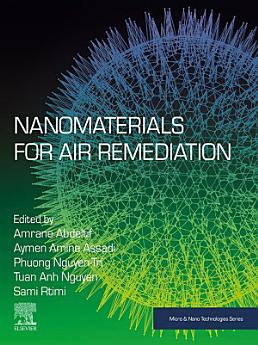Nanomaterials for Air Remediation
આ ઇ-પુસ્તક વિશે
લેખક વિશે
Amrane Abdeltif is Professor in the ENSCR – Laboratory UMR CNRS 6226 Institut des Sciences Chimiques de Rennes, France. His research area of interest is fermentation and biological treatment processes, optimisation, modelization, environmental bioengineering, fungal physiology, gas treatment, and wastewater treatment.
Aymen Amine Assadi is Associate Professor in the the ENSCR – Laboratory UMR CNRS 6226 Institut des Sciences Chimiques de Rennes, France. His area of interest is in chemical and environmental engineering, including water gas treatment, coupling of process, adsorption and isotherms on activated carbon, modeling and simulations for water/air treatment with POA, aerodynamics and mass and heat transfer and chemical reactions.
Tuan Anh Nguyen is a Senior Principal Research Scientist at the Institute for Tropical Technology, Vietnam Academy of Science and Technology, Hanoi, Vietnam. He received a BS in physics from Hanoi University in 1992, a BS in economics from Hanoi National Economics University in 1997, and a PhD in chemistry from the Paris Diderot University, France, in 2003. He was a Visiting Scientist at Seoul National University, South Korea, in 2004, and the University of Wollongong, Australia, in 2005. He then worked as a Postdoctoral Research Associate and Research Scientist at Montana State University, United States in 2006-09. In 2012 he was appointed as the Head of the Microanalysis Department at the Institute for Tropical Technology. His research areas of interest include smart sensors, smart networks, smart hospitals, smart cities, complexiverse, and digital twins. He has edited more than 74 books for Elsevier, 12 books for CRC Press, 1 book for Springer, 1 book for RSC, and 2 books for IGI Global. He is the Editor-in-Chief of Kenkyu Journal of Nanotechnology & Nanoscience.
Dr. Sami Rtimi, PhD is Scientific Advisor at the Swiss Federal Institute of Technology (EPFL). He is an expert in thin film design and preparation for self-sterilizing and self-cleaning applications. Dr. Rtimi has authored several peer-reviewed studies and reviews, book chapters, patents, and presented at several international meetings & conferences. He is an experienced editor of Elsevier books and has served as guest editor for several special journal issues in his area of expertise.






